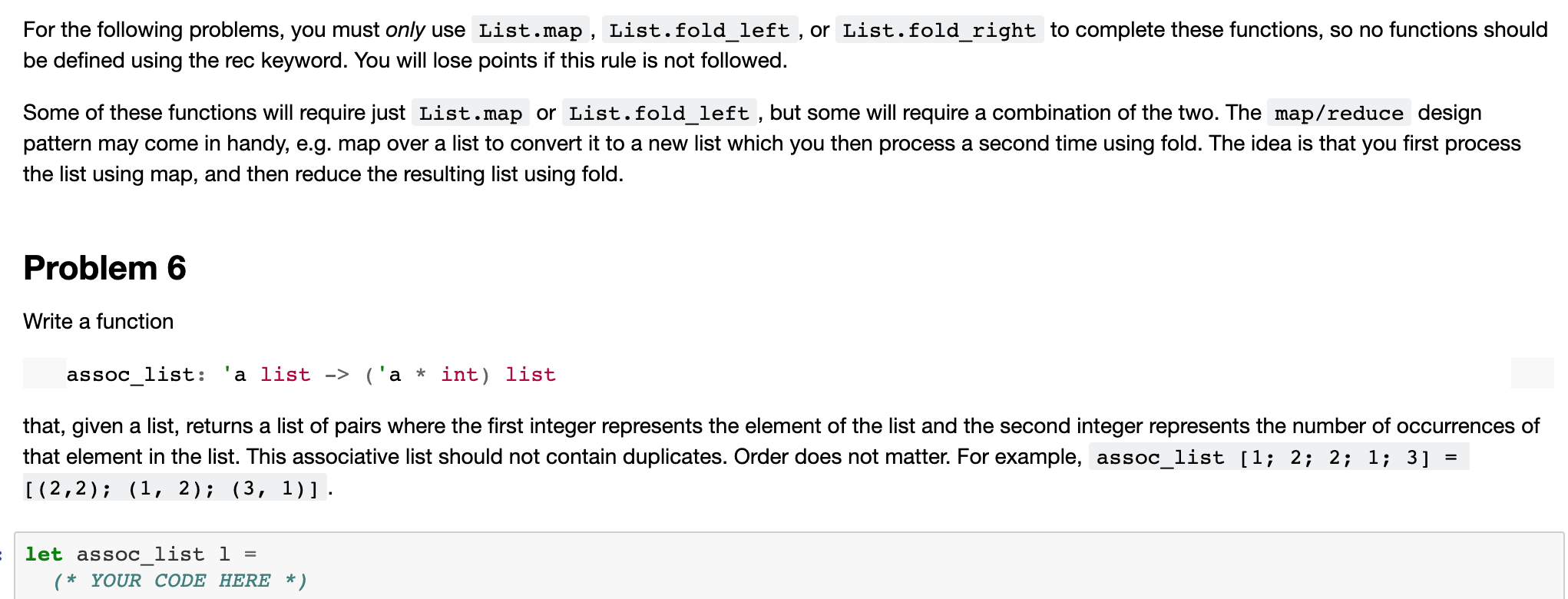Answered step by step
Verified Expert Solution
Question
1 Approved Answer
in ocaml language For the following problems, you must only use List.map , List.fold_left ,or List.fold_right to complete these functions, so no functions should be
in ocaml language
Step by Step Solution
There are 3 Steps involved in it
Step: 1

Get Instant Access to Expert-Tailored Solutions
See step-by-step solutions with expert insights and AI powered tools for academic success
Step: 2

Step: 3

Ace Your Homework with AI
Get the answers you need in no time with our AI-driven, step-by-step assistance
Get Started


